Top 10 Solar Garden Light FAQs: Rain, Winter, More
Solar garden lights have become a popular choice for eco-conscious homeowners and businesses, offering energy-efficient, sustainable outdoor lighting. However, many users have questions about their performance, durability, and maintenance. This article addresses the top 10 frequently asked questions about solar garden lights, covering topics like rainy-day performance, winter reliability, lifespan, brightness issues, and more. With advancements in photovoltaic panels, battery technology, and smart features, we provide clear, professional answers to help you make informed decisions.

1. Can Solar Garden Lights Work on Rainy or Cloudy Days?
Ensuring Reliable Performance in Low Light
One of the most common concerns is whether solar garden lights can function during rainy or cloudy weather. Modern solar-powered lighting systems are designed with high-efficiency photovoltaic panels and large-capacity batteries to ensure reliable performance. For instance, lights equipped with monocrystalline or perovskite solar cells (achieving over 30% conversion efficiency) can generate sufficient energy even in low-light conditions.
A large-capacity battery, typically lithium-ion, can store enough power to provide 3–7 days of illumination during overcast weather. To maximize performance, choose models with solar panel efficiency optimized for diffuse light and ensure the photovoltaic panel is clean. For more on high-efficiency solar panels, explore advanced options available in 2025.
2. Are Solar Garden Lights Suitable for Winter Use?
Cold Weather Performance and Maintenance
Winter conditions, especially in colder climates, raise concerns about solar garden lights performance. Most high-quality models are built with low-temperature batteries, designed to operate effectively down to -20°C. These lithium-ion batteries maintain charge efficiency and prevent freezing, ensuring consistent illumination during winter months.
Snow accumulation on photovoltaic panels can reduce charging efficiency. Regular cleaning or installing lights with tilted panels can mitigate this issue. Some advanced models feature self-heating photovoltaic systems to melt snow, enhancing winter reliability. Check out winter-ready solar lighting for tailored options.
3. How Long Do Solar Garden Lights Last?
Lifespan of Components
The durability of solar garden lights depends on their components. Photovoltaic panels, typically made of monocrystalline or polycrystalline silicon, have a lifespan of 10–15 years with minimal degradation (less than 1% annually). Perovskite solar cells, an emerging technology, offer similar longevity with higher efficiency.
Batteries, such as lithium-ion or LiFePO4, last 3–5 years but are replaceable, extending the overall life of the system. LEDs, the primary light source, can last up to 50,000 hours (approximately 10 years with average use). Regular maintenance, like cleaning the solar panel, ensures optimal longevity. Learn more about solar light maintenance.
4. Why Is My Solar Garden Light Not Bright Enough?
Addressing Brightness Issues
If your solar garden lights are not bright enough, several factors could be at play. First, check the photovoltaic panel for dirt, dust, or debris, which can reduce charging efficiency by up to 30%. Regular cleaning with a soft cloth and water can restore performance.
Second, ensure the light is placed in an area with sufficient sunlight exposure, avoiding shade from trees or buildings. If brightness remains inadequate, consider upgrading to a high-lumen solar light (1000+ lumens) for enhanced illumination. Some models offer adjustable brightness settings via mobile app control, allowing customization. Explore high-lumen solar lights for brighter options.
5. How Do I Choose the Right Solar Garden Light for My Needs?
Matching Features to Applications
Selecting the right solar garden light depends on your specific requirements. For pathways, choose lights with human motion sensors for energy-efficient illumination. For aesthetic purposes, opt for models with adjustable color temperatures (3000K warm to 6500K cool) to create the desired ambiance.
Consider battery capacity and solar panel efficiency for areas with limited sunlight. Smart features, like mobile app control or IoT connectivity, are ideal for tech-savvy users. For commercial or public spaces, prioritize durability (IP65+ rating) and scalability. Review solar light selection guides for detailed comparisons.
6. Are Solar Garden Lights Weatherproof?
Durability in Harsh Conditions
Most solar garden lights are designed to withstand various weather conditions, with IP65 or higher ratings for water and dust resistance. These ratings ensure protection against rain, snow, and dust storms, making them suitable for year-round outdoor use.
However, extreme conditions like hurricanes or heavy flooding may require additional precautions, such as secure mounting and elevated installation. Photovoltaic panels and battery compartments are sealed to prevent water ingress, but regular inspections can prevent long-term damage. For more on weatherproof solar lights, check available models.
7. Can Solar Garden Lights Be Integrated with Smart Home Systems?
Smart Features and Connectivity
In 2025, solar garden lights are increasingly compatible with smart home ecosystems like Amazon Alexa, Google Home, and Apple HomeKit. This IoT connectivity allows users to control lights via voice commands or integrate them with security systems for motion-activated illumination.
Mobile app control enables remote scheduling, brightness adjustments, and real-time monitoring. For example, lights can sync with cameras to enhance security or adjust automatically based on weather forecasts. This integration makes solar-powered lighting a cornerstone of smart outdoor spaces. Learn about smart home solar integration.
8. How Do I Maintain Solar Garden Lights?
Simple Maintenance for Optimal Performance
Maintaining solar garden lights is straightforward but essential for longevity. Clean the photovoltaic panel every 3–6 months to remove dirt, leaves, or snow, ensuring maximum solar panel efficiency. Use a soft cloth and non-abrasive cleaner to avoid scratching the surface.
Check battery health annually, replacing it every 3–5 years as needed. Inspect wiring and mounts for wear, especially after extreme weather. For smart solar lights, update firmware via the app to ensure optimal performance. Refer to solar maintenance tips for detailed guidance.
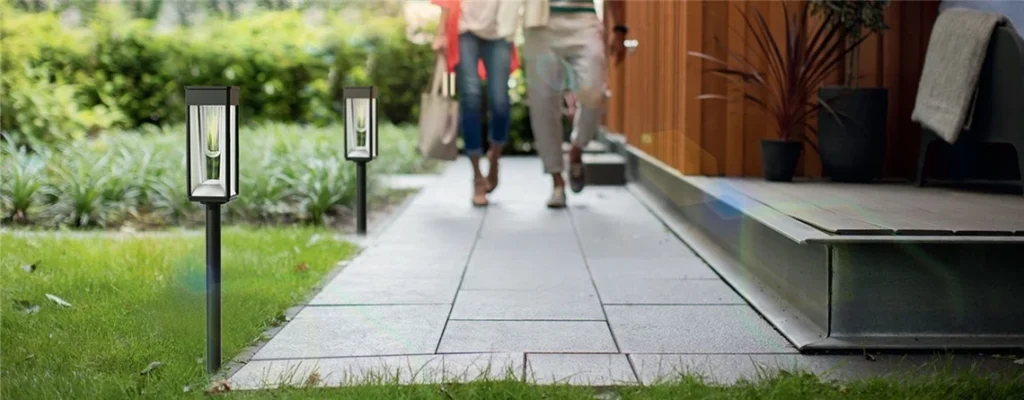
9. Are Solar Garden Lights Cost-Effective?
Long-Term Savings and Value
While the upfront cost of solar garden lights may be higher than traditional lighting, their energy efficiency eliminates electricity costs, offering significant savings over time. Perovskite solar cells and large-capacity batteries reduce reliance on grid power, while durable components minimize replacement costs.
For example, a high-quality solar garden light costing $50–$100 can save $10–$20 annually on electricity, breaking even within 5 years. Government incentives for solar-powered lighting may further offset costs. Explore cost-effective solar solutions for budget-friendly options.
10. What’s the Future of Solar Garden Lights?
Innovations on the Horizon
The future of solar garden lights is bright, with ongoing advancements in photovoltaic panels, battery technology, and smart features. Perovskite solar cells are expected to become more affordable, driving down costs while maintaining high solar panel efficiency. Emerging solid-state batteries promise longer lifespans and faster charging.
AI-driven energy optimization and wireless power transmission are set to enhance functionality, allowing lights to adapt to usage patterns and share energy wirelessly. As demand for sustainable lighting grows, solar garden lights will continue to lead in innovation and accessibility.
Conclusion
Solar garden lights in 2025 offer reliable, eco-friendly solutions for outdoor illumination, addressing common concerns like rainy-day performance, winter durability, and brightness. With advancements in perovskite solar cells, large-capacity batteries, human motion sensors, and smart home integration, these lights combine functionality with sustainability. By understanding their features and maintenance needs, users can maximize the benefits of solar-powered lighting for residential, commercial, or public spaces. As technology evolves, solar garden lights will continue to illuminate the path toward a greener future.

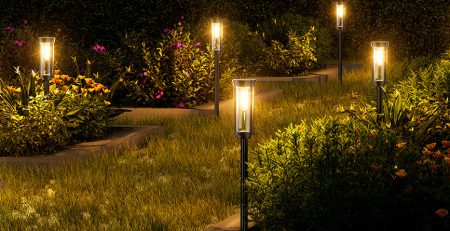
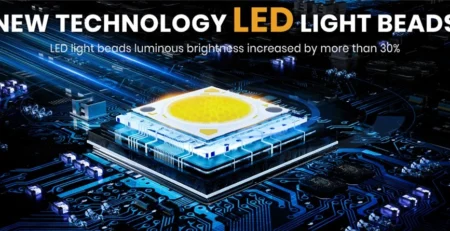
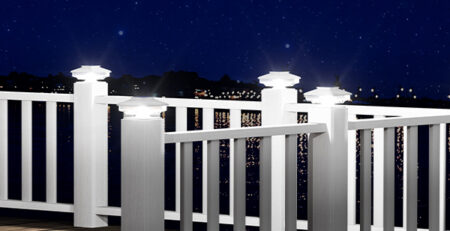
-1-450x231.webp)
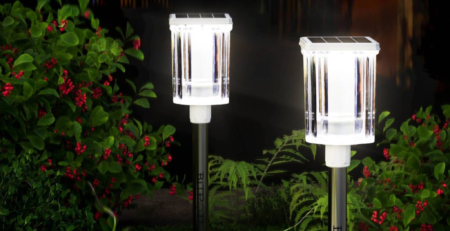

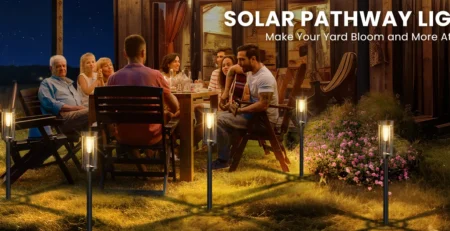



Leave a Reply